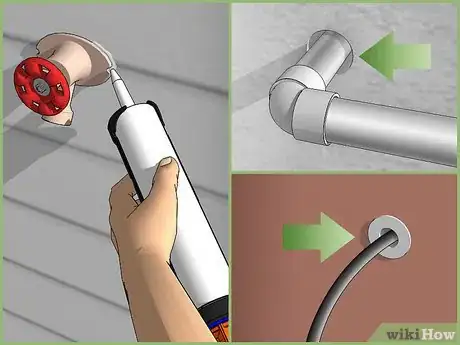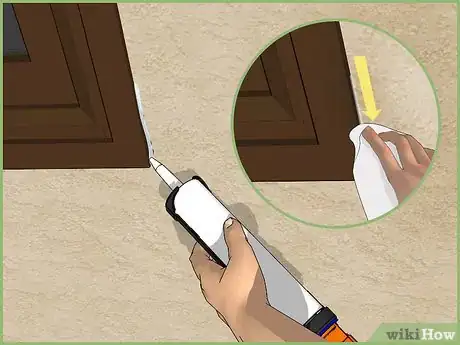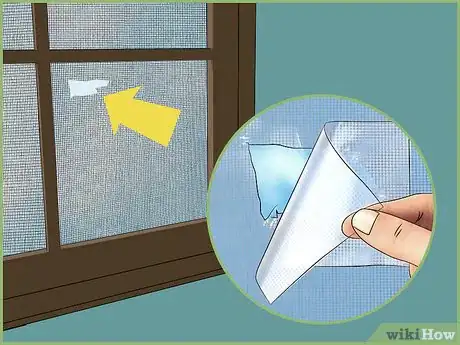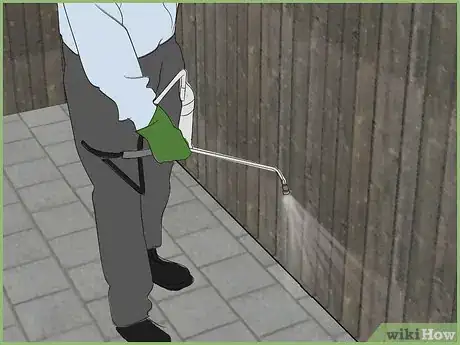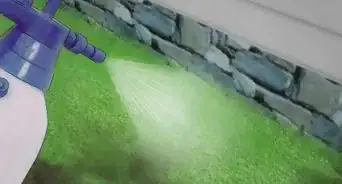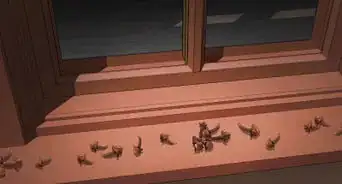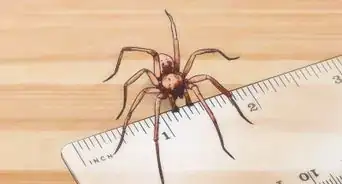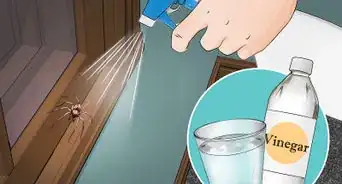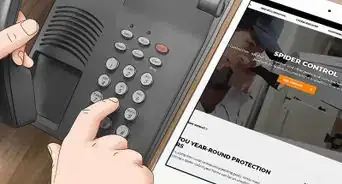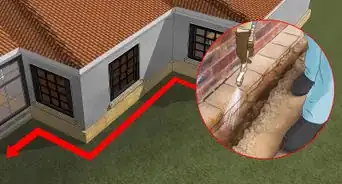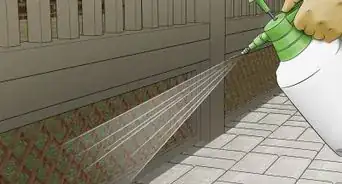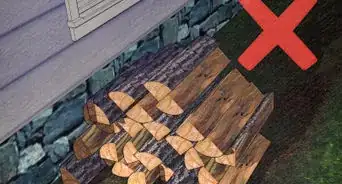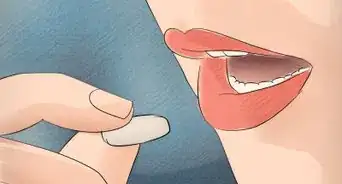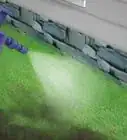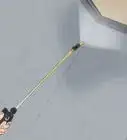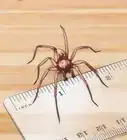X
wikiHow is a “wiki,” similar to Wikipedia, which means that many of our articles are co-written by multiple authors. To create this article, 17 people, some anonymous, worked to edit and improve it over time.
This article has been viewed 101,638 times.
Learn more...
Spiders enter homes by crawling in through any opening. Most spiders don't attempt to enter houses unless there is an extreme change in weather. Periods of heavy rain or drought will drive spiders indoors, as will cold temperature. As you will see from the suggestions below, the easiest way to spider proof your home is to block all the entry points to your house.
Steps
-
1Prevent spiders from entering your home through doors.[1]
- Make sure spiders can't get through any gaps in your exterior doors. Install door sweeps on all of your exterior doors; spiders can squeeze through an opening that is 1/16” (mm) tall.
- Use caulk to seal the outside edges of your doors, but use foam weather-stripping to line the bottom track of sliding glass doors.
-
2Stop spiders from gaining entry to your house through utility openings. Gaps, cracks and holes can be filled with caulk, foam, cement and steel wool. Look for openings in these common entry points:[2]
- Outdoor faucets
- Gas and electric meters
- Cable TV wires
- Dryer vents
- Telephone wires
- Outdoor electrical receptacles
Advertisement -
3Use caulk to fill in all the cracks around your windows.
- Be sure to use a good caulking gun, one that has a back-off trigger which will stop the flow of caulk when you press it; otherwise, you will end up with too much caulk and you'll end up with a mess.
- Smooth the bead of caulk you apply with a damp rag so that it is even and you can see if you've missed any cracks.
-
4Fix all tears and rips in your window and door screens. You can purchase screen repair kits at your local home and garden store.
-
5Cover your roof, attic and crawl space vents with wire mesh. Wear gloves when you do this because the edges of the wire mesh are sharp and you may have to cut the mesh with wire snips to ensure it completely covers each opening.[3]
-
6Apply an insecticide to exterior areas of your home after sealing all the openings if you have a heavy infestation of spiders. Spray the pesticide around the perimeter of your foundation.
-
7Trim all shrubs and foliage that grow near and around your doors and windows; these are areas where spiders like to build their webs.[4]
-
8Store all garden equipment and gardening apparel, such as gloves and gardening clogs, in a shed or garage. Don't leave items outside, especially if you aren't using them on a regular basis.
Advertisement
Community Q&A
-
QuestionHow do I get rid of spiders that are in my room?
 Community AnswerSpiders eat insects. Make sure your room is free of other bugs, and the spiders won't be able to live. Also, keep windows closed unless you have good-quality screens. This will keep both spiders and insects from entering your room in the first place.
Community AnswerSpiders eat insects. Make sure your room is free of other bugs, and the spiders won't be able to live. Also, keep windows closed unless you have good-quality screens. This will keep both spiders and insects from entering your room in the first place.
Advertisement
Warnings
- If you use pesticides in your garden and yard, spiders will be more likely to seek shelter inside your home.⧼thumbs_response⧽
- Make sure your caulk adheres so that it will form an airtight seal; prep all openings, cracks and gaps by cleaning them and removing any old caulk or paint before you apply fresh caulk.⧼thumbs_response⧽
Advertisement
Things You'll Need
- Door sweeps
- Caulk
- Foam, cement or steel wool
- Gloves
- Insecticide (optional)
- Screen mesh repair kit
- Wire mesh
- Wire snips
References
About This Article
Advertisement

